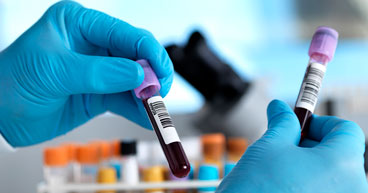


119 Posts

March 25, 2025
What to know about new self-collection HPV screening testsThe FDA now allows women to privately collect the sample for HPV themselves in the doctor’s office.

August 29, 2024
Vaccines: Standard of care for some cancers, elusive for othersNot on the World Health Organization's list of current or potential vaccines is one that prevents all cancers.

July 25, 2024
Even a one-month treatment delay increases cancer death riskThe earlier a patient is diagnosed and the sooner she or he gets treated, the better the chance for a positive outcome. Conversely, a late diagnosis and delays in treatments may result in challenging consequences for patients.

March 28, 2024
4 things we learned from Olivia Munn’s breast cancer diagnosisActress Olivia Munn recently revealed she’d been treated for Luminal B breast cancer. Learn four key facts about her diagnosis and this aggressive cancer.

March 19, 2024
Future blood tests may open doors to cancer detectionBlood tests can detect some cancers, or provide an indication of a potential cancer, which needs to be confirmed or ruled out through additional testing.

January 23, 2024
Cologuard vs. colonoscopy: How to decideNow that there’s a less invasive, at-home test on the market that’s a viable alternative to colonoscopy, more people are asking their doctors if it’s right for them.

January 4, 2024
Most-clicked blogs reflect cancer’s vast impact on patients and caregiversLearning more about the cancer may help you and your loved ones and caregivers better confront a diagnosis head on.

July 27, 2023
12 health screenings every woman should getStaying on top of preventive measures may help boost your overall health, lower your long-term health care costs, improve your quality of life and reduce your risk for developing cancer and other life-threatening diseases.

July 6, 2023
Are breast cancer screening guidelines changing? What to knowFor women at average risk, the new recommendation lowers the age to begin routine mammograms to age 40—10 years earlier than previous guidelines.
Guidelines
The information contained in this blog is not intended nor implied to be a substitute for professional medical advice. Always seek the advice of your physician or other qualified health provider prior to starting any new treatment or with any questions you may have regarding a medical condition. Nothing contained in the blog is intended to be used for medical diagnosis or treatment of any illness, condition or disease.